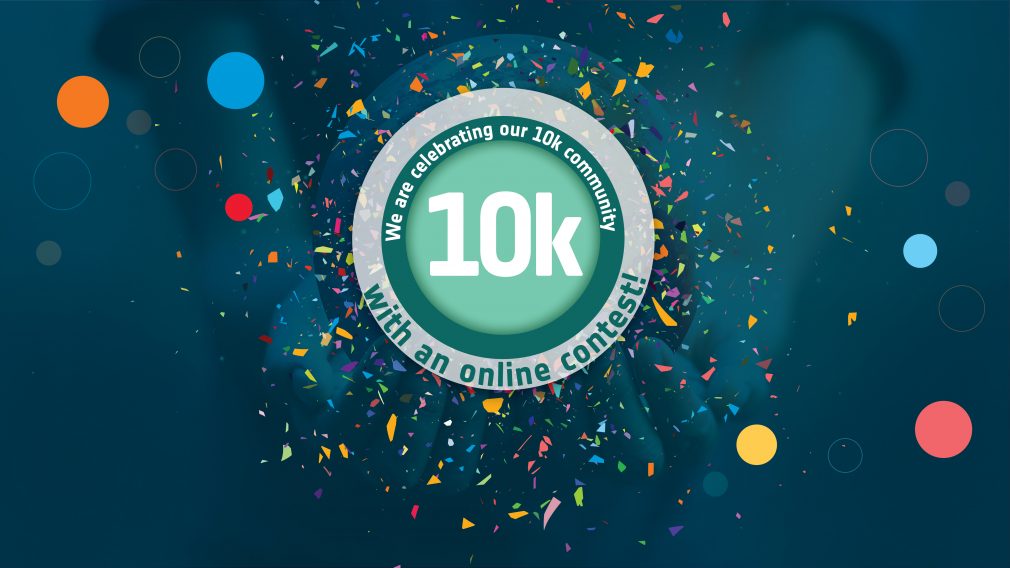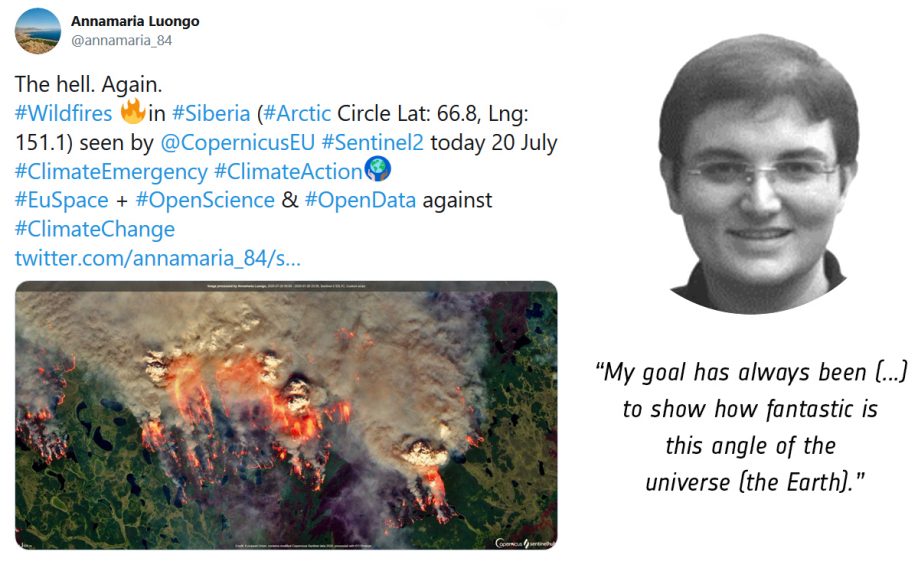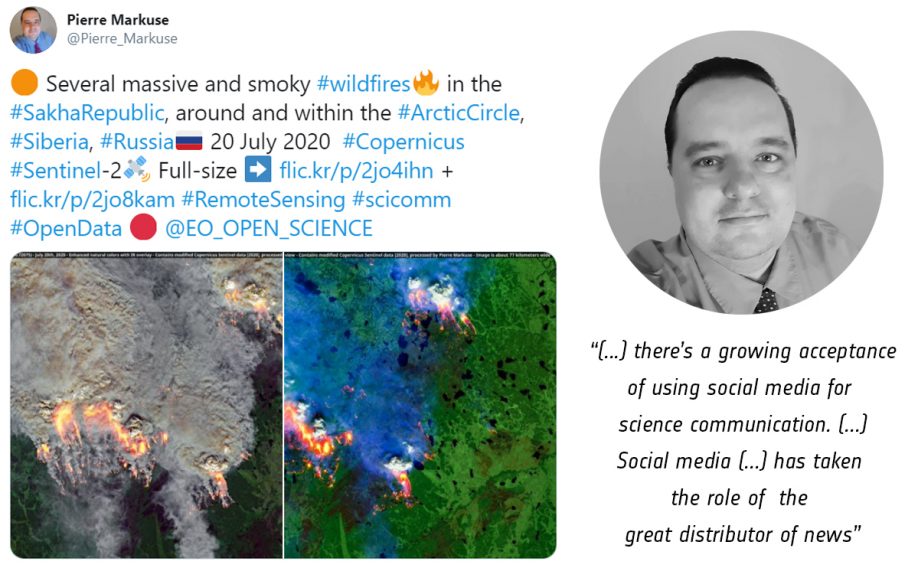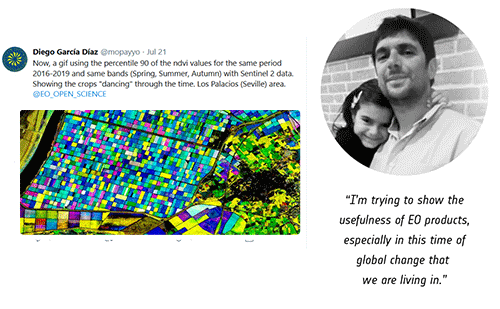It is no news that the use of social media by the science community has grown over the recent years.
Platforms like Twitter offer a quick and efficient tool to engage/enlarge audiences across the globe to showcase research and findings, but not only…
@EO_OPEN_SCIENCE (ESA Twitter account dedicated to Open Science and EO users) reaching 10k followers was a good chance to celebrate and get some insight into the EO social media community, by challenging them to tweet and share the importance of open science in the context of Earth observation.
Many tweets, GIFs and threads illustrated the spirit of this growing and enthusiastic community, but most importantly gave evidence of the importance of Copernicus open data policy that empowers anyone to develop applications and convey messages, leading in some cases to particularly interesting results.
Responses to the 10k challenge highlighted a variety of uses for the EO+social media combination, such as giving immediate visual feedback on ongoing large scale events (e.g. California fires); facilitating/igniting collaboration among different actors (e.g. Rio Cauca case); empowering communication (e.g. Australia wildfires); posing questions (e.g. Dolomiti sustainable tourism); celebrating (e.g. ponte Morandi) and also, last but not least, sharing beautiful, playful and creative results (e.g. my backyard)!
Contest winners
Out of a number of interesting tweets, five were selected. Let’s put faces to people behind them and get to know their motivations and the role of online presence in their daily lives and work. Click on below to find out more and on the image to go straight to the original tweet.






